
We
learn the phrase "Manifest Destiny"
in grade school, but for modern day
Americans, the term describes a bygone era. For
the last 100 years, the number of
stars on the American Flag has
remained relatively stable. In
1912, with the admission of Arizona
and New Mexico, the "Continental
United States" was complete, with
"the Lower 48" all present in the
Union. In January, 1959,
Alaska entered the Union, and on
July 4, 1959, 49 became official.
But by August 1959 Hawaii completed
the modern United States as its 50th
State, and in the 50 years since
1960, the flag has remained as we
know it today. It is for this
reason that very few Americans know
much about the great variety of
antique American flags that exist.
Perhaps they know about their
grandparents' 48 star flag, but you
must go back nearly 100 years to
encounter any significant variation.
That
was not the case in the early days
of the republic. For example,
it's a little known fact that
President James K. Polk, our 11th
President, served under more
versions of the American Flag than
any other sitting president, despite
the fact that he only served one
term (1845-1849, covering 26,
Michigan; 27, Florida; 28, Texas;
29, Iowa, and 30, Wisconsin). Consequently, Americans often
planned their flags with spaces in
anticipation of new states being
added to the Union. Sometimes
these voids remained empty.
But on some flags, clear evidence
exists of Americans adding stars to
the flag, in some cases decades after
the original flag was created. Three
such flags are highlighted here as
examples.
In the canton of the
19/25 Star flag featured in the
showcase, the creator of the flag
chose to position all of the stars
to the right side of the canton,
leaving space for new stars on the
left. This is somewhat
unusual, but not unheard of.
It's clear that on two separate
occasions stars were added, most
likely by two other individuals,
both of whom were less experienced
seamstresses than the original
creator (and both of whom had access
to lower quality materials).
Interestingly, because it's not
possible to tell which update took
place first, the path to 25 Stars
for this flag could have been 19 to
21 to 25, or 19 to 23 to 25.
Which is correct? We will most
likely never know.
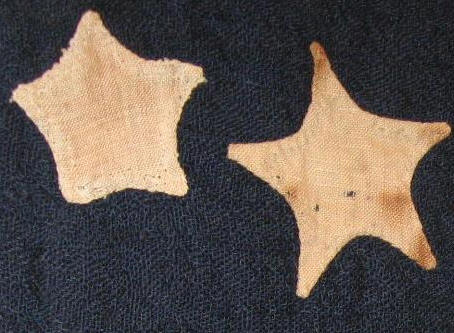
Stars sewn by two different hands
In
yet another example of an updated
flag, the Dale family of Virginia
City, Nevada, kept their family flag
for many years, and updated what was
originally a 37 star flag to 46
stars with the addition of 9 folky
hand sewn stars. A note
accompanying the flag states "Mrs.
Mary Dale used this flag on public
occasions over their hotel in
Virginia City in the "good old days"
of 60's and 70's. Her family moved
to Sebastopol about 1890, buying the
Calender place, now owned by Mr. and
Mrs. Chas. Leland."
This later period flag also features
a canton of stars right-justified in
a "notched configuration" to allow space for new stars
in anticipation of new states.
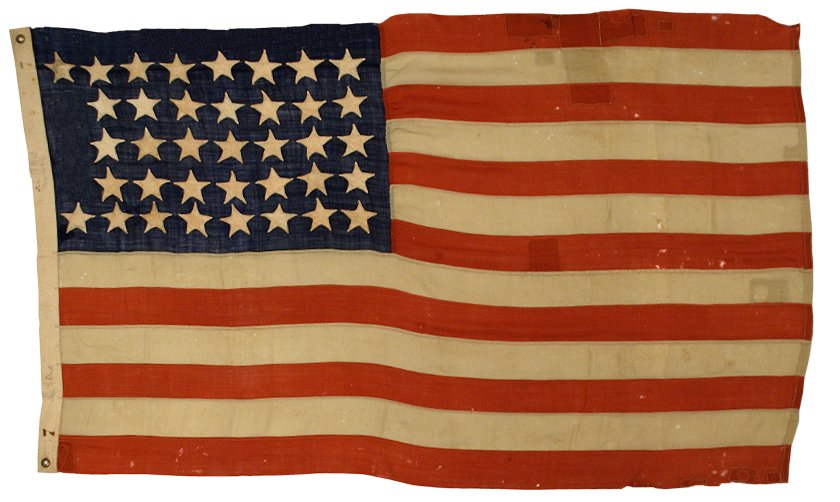 |
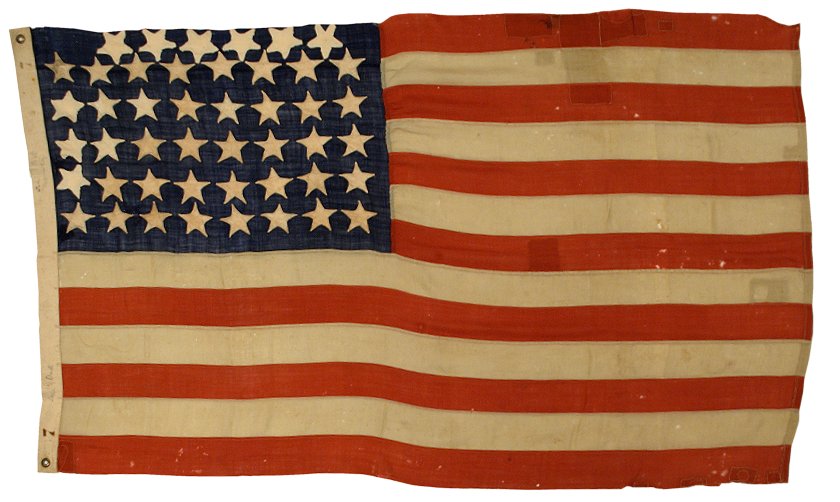 |
|
The Dale Flag in its
original configuration,
37 Stars |
The Dale Flag in its current
configuration,
updated to 46 Stars |
A spectacular
example of updating on a manufactured flag is
found on this silk 42 star flag, which
ultimately dates to 1889-1890, but which began
its life as a 38 star flag. The original
38 stars, which are gilt painted with
mustard-yellow paint used to highlight the arms
of each star, has been augmented with four
additional painted stars which flank the center
star. In all likelihood, the flag was
manufactured for military use, by a military
contracted outfitter, and was in the company's
inventory when our star count jumped from 38
stars to 42 stars in the course of just nine
days, between November 2, 1889 and November 11,
1889. The four added stars are slightly
brighter gilt, and the accent paint is a
different shade of mustard-yellow than is seen
on the other original 38 gilded stars.
|
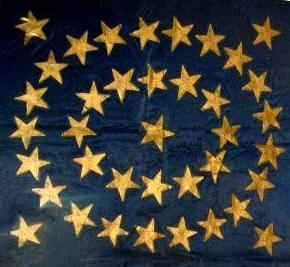 |
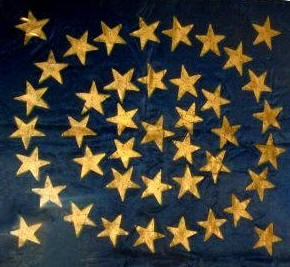 |
|
Beautiful Double Wreath with
38 Original Stars, circa
1876-1889 |
Updated to 42 Stars
circa 1889 |
The 48 Star
Great Star flag below, a rare homemade example
that actually dates to the period of the
American Civil War, began its life with 35 hand
embroidered stars. Great Star flags seemed
to reach the height of their popularity during
the Civil War, but by the time of the American
Centennial, the pattern was rarely seen, being
replaced primarily by medallion pattern flags.
The stars of this flag were updated several
times, and by at least one, and most likely,
more than one, different person than the
original maker of the flag. It's evident
from the construction of the later stars that
they were done by various seamstresses with less
experience at embroidering techniques than the
original creator. The left image shows the
flag as it originally looked in 1863 when it was
made, during the height of the Civil War.
One star in the main Great Star was replaced,
probably out of necessity to repair a damaged
original star.
|
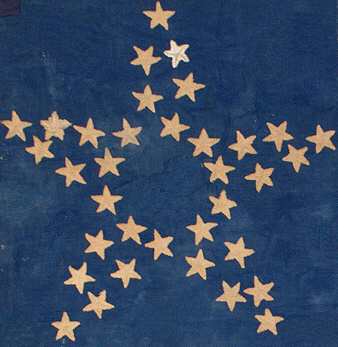 |
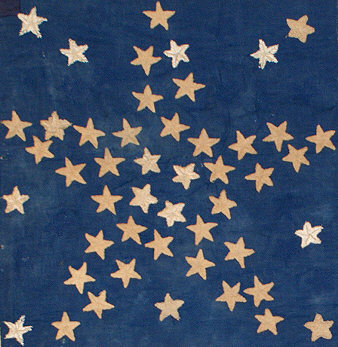 |
|
A Hand Embroidered Great
Star Pattern
with a Circular Center |
Updated from 35 to 48 Stars
Several updates between 1865
and 1959 |
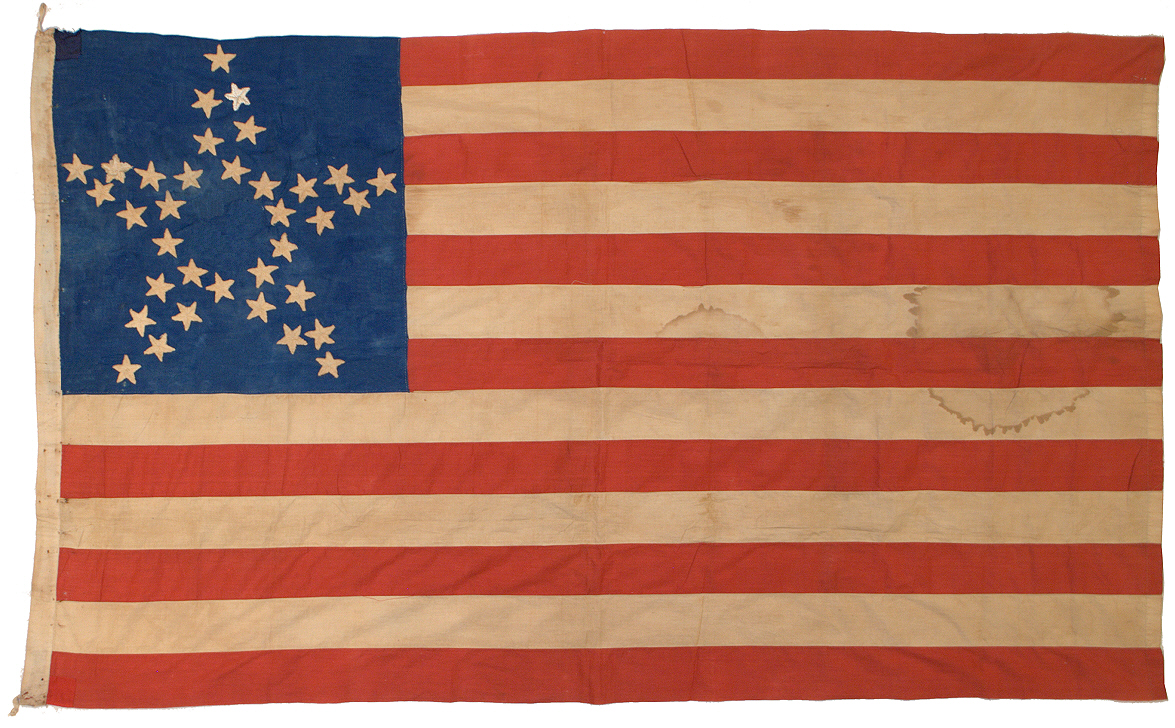 |
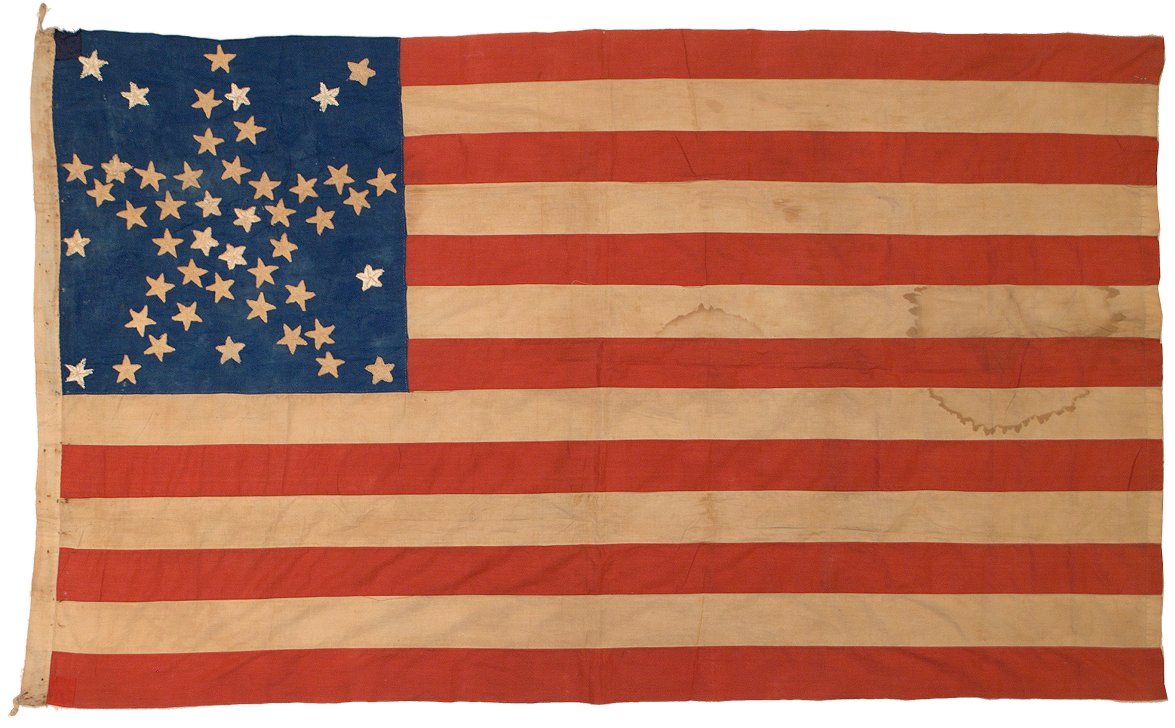 |
Another example
of updating is this wonderful homemade flag of
42 stars, updated to 45 stars. The update
is subtle but the three added stars are somewhat
smaller than the other stars in the flag, and
are placed into spaces left to the right of the
staggered rows.
|
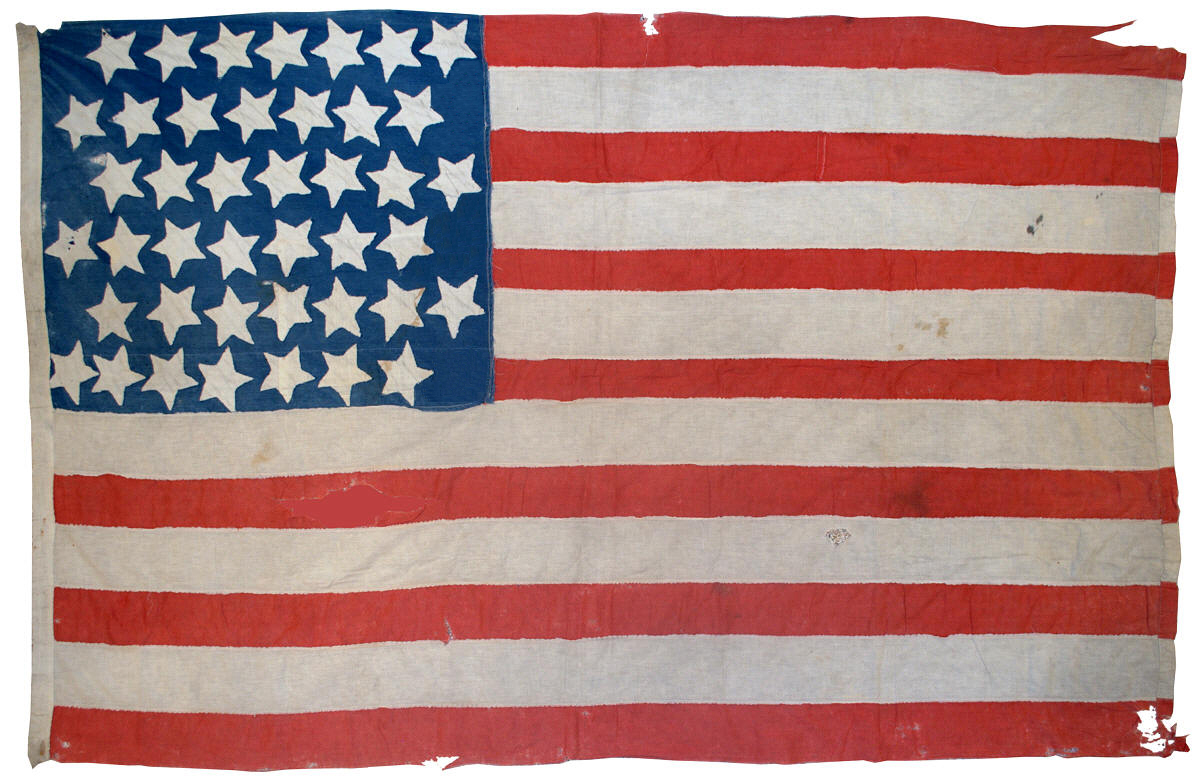 |
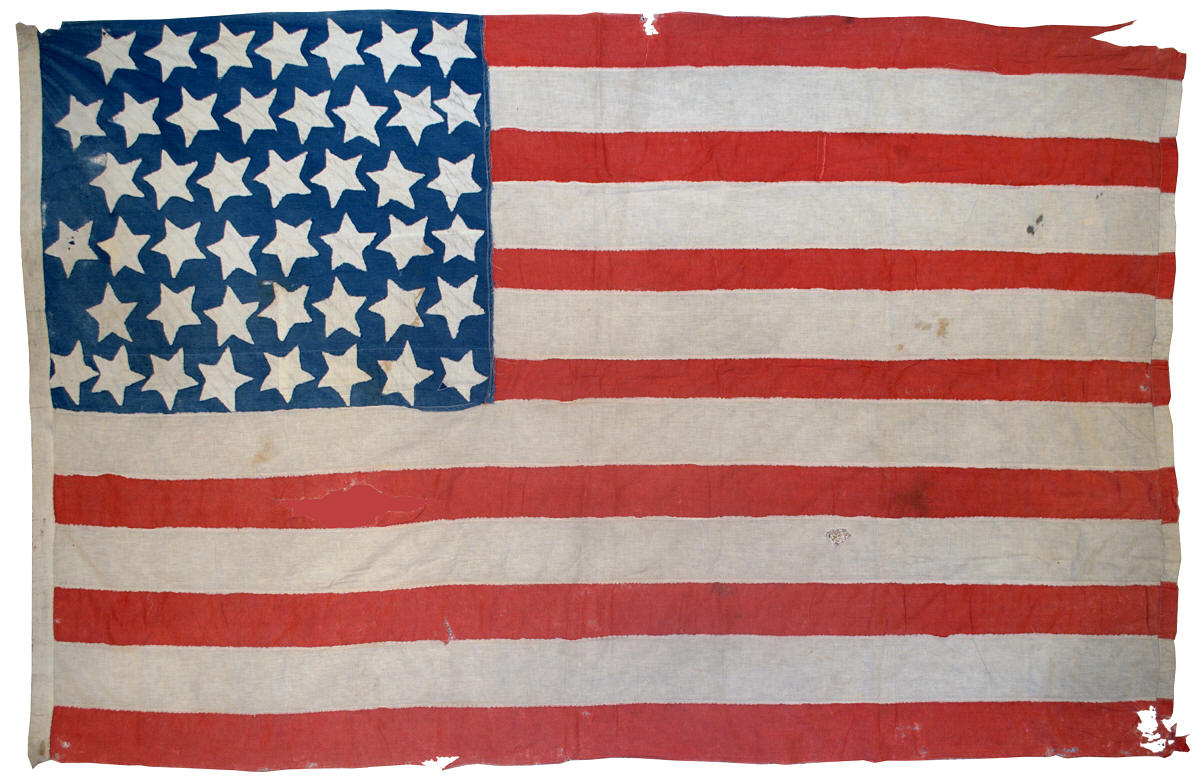 |
|
A 42 Star Flag, circa 1889
Washington Statehood
(Unofficial) |
Updated to 45 Stars,
1896-1908
Utah Statehood |
|
 |
Next:
Fabrics |
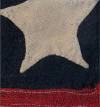 |
|
|

